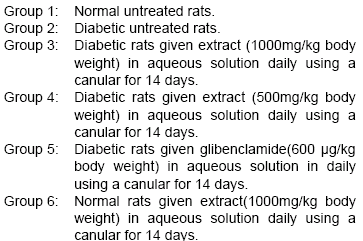Research Article
Hypoglycemic Potential of the Young Leave Methanolic Extract of Magnifera indica in Alloxan Induced Diabetic Rat
Department of Biochemistry, Faculty of Natural Sciences, Ambrose Alli University, Ekpoma, Nigeria
Odetola Adebimpe, A.
Department of Biochemistry, Faculty of Basic Medical Sciences, University of Ibadan, Ibadan, Nigeria











